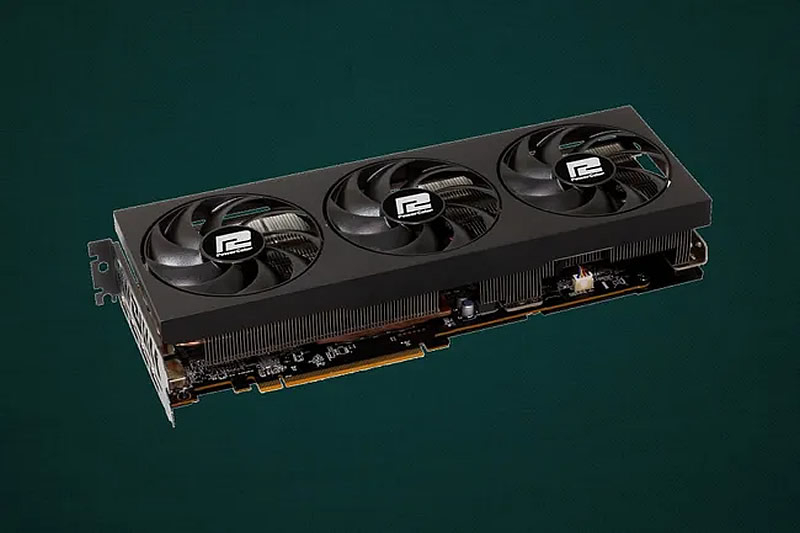AMD plans to catch up with Nvidia in real-time ray tracing technology using neural networks. Nvidia currently dominates the graphics card market thanks to its advanced AI and machine learning-based technologies such as DLSS. AMD is still significantly behind, especially in the consumer segment, but expects to change the situation in the near future.

Image source: PowerColor, Tomshardware.com
Traditional ray tracing requires a huge amount of computation – sometimes thousands or tens of thousands of rays per pixel, which is the standard used in the film industry, where it can take hours to render a single frame. Ray tracing renders a scene by calculating light reflections, where each change in the ray path can result in a different color interpretation of the pixel. The more such calculations, the better the final image becomes.
However, to achieve real-time ray tracing, which is relevant for video games, the number of such calculations must be significantly reduced. But this will lead to even more noise in the images due to the fact that some rays often fail to reach certain pixels, causing the scene to be incompletely illuminated. AMD plans to address this issue with a neural network that will eliminate these problems and restore scene detail, similar to Nvidia’s approach.
AMD’s actual innovation is to combine upscaling and noise removal in one neural network. As the company itself states, their approach “generates high-quality denoised and supersampled images at a higher display resolution than real-time path tracing rendering resolution.” This will allow you to perform upscaling in one pass.
AMD’s research could lead to a new version of FSR (temporal scaling technology) that could rival Nvidia’s technology in performance and image quality. However, the question is, will existing AMD GPUs be able to support neural networks to eliminate noise, or will new hardware be required? For example, Nvidia’s DLSS requires dedicated AI hardware on GeForce RTX GPUs, as well as an optical streaming accelerator to generate frames on GeForce RTX 40-series and later models. Current AMD GPUs generally do not have dedicated AI accelerators, unlike Nvidia GeForce RTX, where such accelerators play a key role in the implementation of DLSS.
If AMD can implement an effective approach to neural ray tracing and upscaling, it will expand access to high-quality graphics on a wider range of hardware. However, given the high ray tracing demands of modern games like Alan Wake 2 and Cyberpunk 2077, the company will likely need more powerful hardware to achieve high levels of image quality.